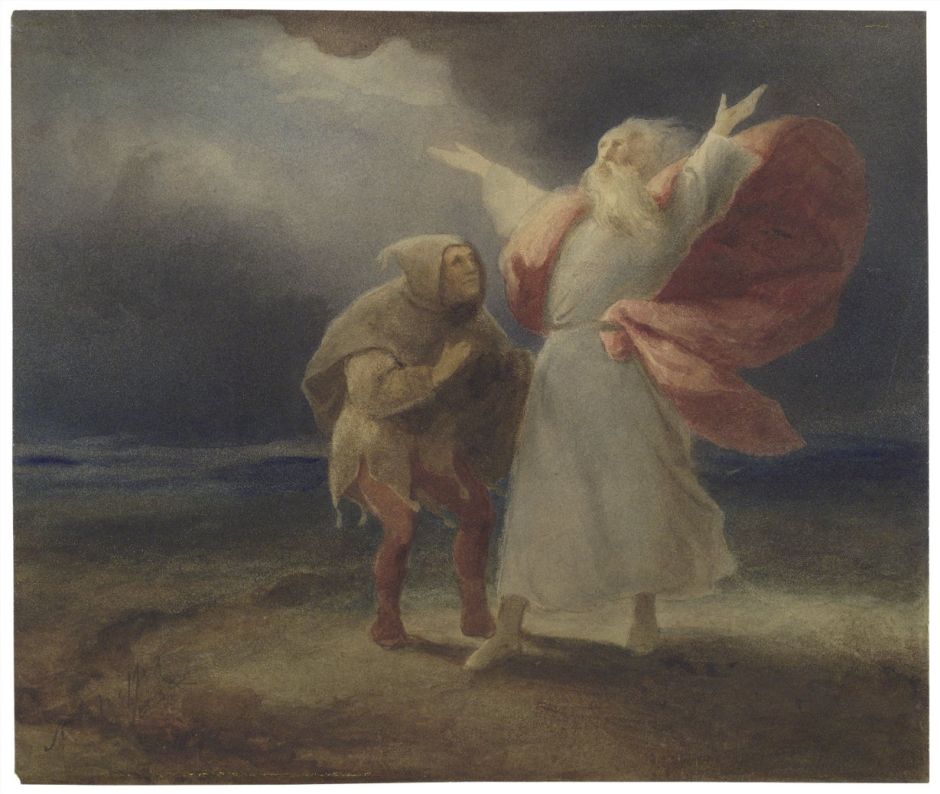In the light of recent events in British politics, I’m devoting this weekend to paintings of fools, jesters, clowns and their folly. Today’s selection shows those figures often kept at court to bring the lighter side to life for monarchs and their entourage. Tomorrow I’ll look in detail at an unusual simile transferred from Greek political philosophy to visual art.
Several of Shakespeare’s plays feature fools or jesters, some of whom play significant roles in the plot. The most famous of these must be Yoric, on whose skull Hamlet gives one of the most memorable speeches in the English language.

This was sufficient for Philip Hermogenes Calderon to paint a speculative scene of The Young Lord Hamlet in 1868, showing the prince long before the start of the play. Set in happier days before the death of Hamlet’s father, its reading is an interesting challenge. If the figure on hands and knees, wearing the standard jester’s rig, is Yoric, then presumably the young boy riding on his back is Hamlet, and the younger infant in the care of the three women on the right is the young Ophelia.

Pascal Dagnan-Bouveret shows the famous scene of Hamlet and the Gravediggers (1883) as the prince is about to lament the passing of Yoric to the gravediggers, opening with the words “To be, or not to be…”.
The fool in King Lear has a lesser role, although at least he remains alive and well throughout the play. His most prominent moment is when he accompanies the enraged king out into a tempest.

Ary Scheffer’s watercolour of King Lear and the Fool from 1834 places the pair on Shakespeare’s bleak heath.

In William Dyce’s King Lear and the Fool in the Storm from about 1851, the king is having a good rant into the wind of the storm, his body language profuse. Resting with his head propped on the heels of his hands, the Fool also looks up to the heavens.
Shakespeare’s other plays feature fools and jesters who sing and entertain, like Touchstone in As You Like It.

JW Waterhouse painted his portrait in watercolour, in his undated The Jester.

Daniel Maclise’s Wrestling Scene in ‘As You Like It’ from 1854 shows the wrestler Charles on the left, as Orlando on the right prepares for their contest. The two daughters, Celia and Rosalind, embrace one another in anxiety, and Touchstone is seated at the front.

John Collier’s undated painting of Touchstone and Audrey catches the jester in one of his more serious moments, as he woos the simple Audrey.
My last Shakespearian fool appears in Twelfth Night.

Walter Deverell’s Twelfth Night, Act II, Scene IV (1850) show Feste the clown singing to Orsino and Viola, disguised as Cesario.
A few non-theatrical fools and jesters also appear in paintings.

“Keying Up” – The Court Jester was one of William Merritt Chase’s student paintings, made in 1875 when he was studying at the Academy of Fine Arts in Munich, Germany. He sent this back to his sponsors in St. Louis, Missouri, where it went on to win a medal at the Philadelphia Centennial Exhibition that year.

Georges Clairin had a reputation of being a socialite, but his King’s Fool from 1880 is unusual and simply great fun.
Other than the fictional Yoric, few jesters or fools have attained fame. One notable exception to this is Stańczyk, a Polish court jester who lived between about 1480-1560.

In 1917 Kazimierz Sichulski painted this Portrait of Józef Piłsudski with Wernyhora and Stańczyk in pastels. Piłsudski was a major Polish statesman who was to become Chief of State after the First World War. Stańczyk (left) here symbolises Poland’s struggle for independence. Wernyhora (right) is a legendary Cossack bard who apparently told of the fall of Poland and its subsequent rebirth as a great nation. Both Piłsudski and Wernyhora feature in contemporary paintings by Jacek Malczewski.
For some unaccountable reason, in Britain at least, our contemporary fools have made themselves our rulers. Tomorrow’s article considers them in the curious theme of the Ship of Fools.

